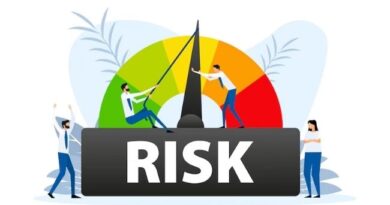What is a Risk Register and How to Create One
Introduction
Managing risk begins with visibility—and nothing offers clearer insight than a well-organized risk register. Whether you’re handling a high-stakes project or overseeing daily operations, a risk register is an indispensable tool for tracking potential threats and ensuring effective response strategies.
This guide breaks down the purpose, structure, and steps to create and manage a risk register that empowers decision-making and strengthens your risk management framework.
What Is a Risk Register?
A risk register, sometimes called a risk log, is a centralized document that records:
- Identified risks
- Their potential impact and likelihood
- Who is responsible for managing them
- What mitigation actions are planned
- Current status and timeline
It serves as a living record to monitor threats and responses throughout the life of a project, department, or business unit.
Why Is a Risk Register Important?
The value of a risk register lies in its ability to:
- Capture all risks in one place
- Provide a structured approach to evaluation and action
- Enable timely updates as conditions evolve
- Assign clear ownership and accountability
- Support compliance and audit requirements
For risk professionals, it’s a practical foundation for both proactive planning and responsive management.
When and Where Should You Use a Risk Register?
Risk registers are useful across all business levels:
- Projects: Monitor deliverables, timelines, and budget risk
- Operations: Track process and resource vulnerabilities
- Compliance: Record regulatory exposure and control measures
- IT & Security: Log cyber, privacy, and infrastructure risks
- Executive Strategy: Monitor risks tied to expansion, investments, and innovation
No matter the scale, if there’s a goal with variables, a risk register can help keep it on track.
Core Elements of a Risk Register
Here’s what a standard risk register includes:
| Field | What It Tracks |
| Risk ID | A unique identifier for each risk |
| Description | A brief explanation of the risk |
| Category | Type: Operational, Strategic, Legal, Financial, etc. |
| Risk Owner | Person or team responsible for managing the risk |
| Likelihood | Probability rating (e.g., 1–5) |
| Impact | Potential severity of the risk (e.g., 1–5) |
| Risk Score | Calculated score (Likelihood × Impact) |
| Mitigation Actions | Steps to reduce or address the risk |
| Status | Open, Closed, In Progress, Deferred |
| Review Frequency | How often the risk will be assessed or updated |
| Last Reviewed Date | The most recent review or status update |
Optional columns may include:
- Velocity (how fast a risk might materialize)
- Detection (how easily it can be spotted)
- Escalation triggers
How to Build a Risk Register – Step by Step
1. Set Objectives and Scope
Decide what the register will cover—an entire company, a project, or a department. Be clear about why it’s being created.
2. Identify Risks
Use methods like:
- Brainstorming sessions
- SWOT analysis
- Historical data review
- Expert interviews
Make sure risks are specific and understandable.
3. Assess Likelihood and Impact
Use a 1–5 or low/medium/high scale to assess each risk. Document why each score was given.
4. Calculate the Risk Score
Multiply Likelihood × Impact. This gives you a number that helps with ranking and visualization on a risk heat map.
5. Assign Ownership
Every risk should have a clearly assigned owner to drive actions and provide updates.
6. Define Mitigation Strategies
Outline what actions will be taken to:
- Avoid the risk
- Reduce the likelihood or impact
- Transfer it (insurance or outsourcing)
- Accept it with contingency plans
7. Document and Monitor
Populate your risk register with all relevant fields. Store it in a centralized, accessible platform. Update it on a regular basis.
Best Practices for Managing a Risk Register
- Use consistent terminology to reduce confusion
- Avoid vague descriptions—be specific about what could go wrong
- Review regularly—risks evolve and new ones emerge
- Link risks to business goals to assess true impact
- Keep it simple—clarity is better than complexity
Tools You Can Use
You don’t need specialized software to start. Try:
- Excel or Google Sheets (for simplicity)
- Airtable or Notion (for flexibility)
- Risk Management Software like Resolver, LogicManager, or Riskonnect (for large-scale use)
Pick the format that matches your organization’s scale and maturity.
Common Pitfalls to Avoid
- Creating a register and forgetting about it: It should be reviewed regularly.
- Assigning multiple owners to one risk: Ownership gets diluted.
- Focusing only on high risks: Medium and low risks can grow if ignored.
- Not involving stakeholders: Those closest to operations often know the real risks best.
Explore Best Online Courses to Learn Risk Management
If you’re new to risk management or looking to deepen your expertise, there’s no better time to start than now. Learning from industry experts can help you build a strong foundation and gain certifications that set you apart in the job market.
At www.smartonlinecourse.com, in collaboration with the Risk Management Association of India (www.rmaindia.org), you can explore a range of self-paced, affordable online courses designed for both beginners and professionals. These courses are tailored to real-world needs, taught by experts, and designed for flexible learning.
👉 Visit www.smartonlinecourse.com to explore more!
📧 Email: [email protected]
Conclusion
A well-maintained risk register is a powerful instrument in your risk toolkit. It keeps risks visible, responses accountable, and planning intentional. Whether you’re managing projects or steering strategy, learning how to build and use one effectively is a fundamental step in mastering risk management.




